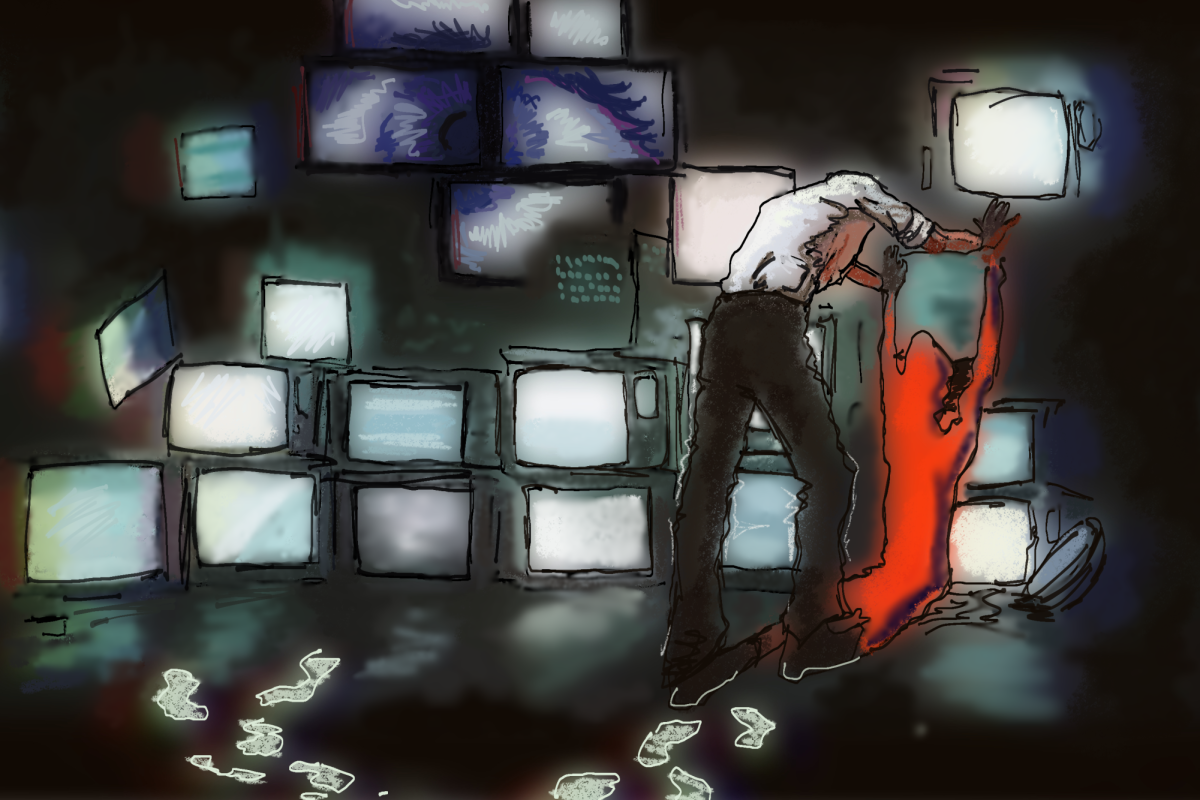In 2009, I photographed Governor Rick Perry sticking his tongue out while signing legislation at his desk in the Texas State Capitol building. He was probably just wetting his lips, but frozen in that pose, he looks like a nitwit who must apply all his concentration to the task of signing his name. I’ve licensed this image as a stock photograph, and I earn small royalties on it.
Not surprisingly, the websites that pay to use my photo of the governor are mostly left-leaning political blogs. My photo often accompanies an article that is critical of Perry, but that refrains from ad hominem attack—the photograph itself communicates the message “Rick Perry is a moron,” sparing the writer the indignity of explicitly articulating such a childish invective.
I license this photograph, and hundreds of others, through various stock photography libraries. There’s a fair chance you’ve seen my photos, on book jackets or blogs or restaurant menus or billboards. For decades, stock photo libraries got most of their business from commercial clients who needed images for advertisements. Recently, though, stock photographs have assumed an expanded role in politics—and not just photos of politicians.
To attract attention and to grow, what any political movement needs is a visible base of support. Now, anyone with a credit card can buy images of enthusiastic, hardworking people, slap some photos up on a website, and claim (or at least imply) that the people pictured are part of their cause. This is part of a public relations tactic called “Astroturfing”—fabricating an artificial grassroots movement that looks popular, but is actually orchestrated by a tiny group of people with enough resources to create the illusion of populism.
An organization called Faces of Coal defines itself as “an alliance of people from all walks of life who are joining forces to educate lawmakers and the general public about the importance of coal mining to our local and national economies and to our nation’s energy security,” which sounds better than the truth: a lobbying group funded by two billionaire brothers who inherited a massive stake in the American coal industry from their father. When it was launched, the Faces of Coal website featured photos of young, multi-ethnic professionals, who were presumably the “faces” of people who supported the coal industry. But these smiling young men and women probably aren’t interested in the importance of coal mining to our national security, since the people in the photographs are not even Americans. These photos were shot by Danish stock photographer Yuri Acurs and British stock photographer Catherine Yeulet.
In 2011, the National Organization for Marriage, a group that opposes same-sex marriage, posted photos of huge crowds on their homepage. Wow! It really looked like a popular movement with thousands of supporters. It turned out, though, that the crowd shots were actually taken at a 2008 Obama campaign rally.
This year, Rick Perry faced nationwide criticism for his efforts to defund Planned Parenthood, which had the collateral effect of defunding other women’s clinics throughout Texas, even those that do not perform abortions. In an obvious effort to counter the accusation that the governor was part of a conservative “war on women,” Perry’s website added a temporary page proclaiming his ongoing support of women’s health initiatives in Texas. The top of the page featured a photograph of a female doctor showing an X-Ray to a female patient. At first glance, one might reasonably assume that these women are representative participants in Perry’s women’s health initiative. One might also assume that, by consenting to have their photographs appear on the governor’s website, these women must be endorsing Perry. In reality, the women in the photograph aren’t even Texans (and likely aren’t a doctor and patient, and probably aren’t in a medical office). The picture was made by stock photographer Alexander Raths, in Germany.
Everybody knows that photographs can be faked or manipulated, or used out of context, but our instinct still is to trust our eyes. Don’t make that mistake. The next time you see a well-lit photograph of smiling, enthusiastic “ordinary people” on a political website, take a screen shot, and upload that image to Google’s new reverse image search, or the similar search engine Tineye.com. You might discover that the photograph has absolutely no relationship to the campaign, the website or the idea it ostensibly illustrates.
—Valentine is an author, photographer, lecturer and the program coordinator for the Plan II Honors Program.




















